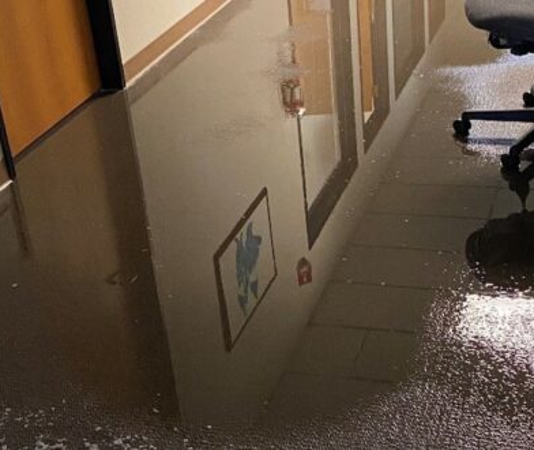
Difference Between Water Mitigation and Restoration
From plumbing problems to floods, there are several causes of water damage. It can leave an average homeowner feeling overwhelmed and confused. In addition to damaging items and structures, standing water can quickly become a breeding ground for disease-causing viruses and bacteria.
Water Damage: A Property Owner’s Worst Nightmare
Unattended moisture after water damage can lead to mold growth. It can also cause significant damage to the support structures. Over time, this damage can compromise your building’s structural integrity, putting you, your employees, and visitors at risk.
The longer the water sits on your property, the more damage it will cause. Therefore, one of the first things you should do after water damage to your property is hiring an expert to mitigate water damage and restore your property to its original condition. The expert will assess the situation and take various steps to mitigate and reverse the damage.
Water Damage vs. Restoration
Property owners dealing with water damage often come across two terms-water mitigation and restoration. Though used interchangeably, water mitigation and restoration are not the same. Instead, both are geared towards different purposes.
Water Restoration
Water damage restoration in Sacramento is a term used to describe the process of water cleanup from beginning to end after water damage. Water damage restoration experts use tried and tested methods to restore water damaged properties to their pre-damaged condition.
Water damage restoration typically includes:
➢ Replacing walls, flooring, drywall, and any other materials that are beyond repair
➢ Roof repair
➢ Locating and eliminating any hidden residual moisture (in areas such as inside wall cavities)
➢ Mold removal
➢ Confirming that all necessary steps have been taken to dry out structures, areas, and items
Water Mitigation
Water mitigation is focused on containing damage and preventing any further damage to the property. Water mitigators do not repair or replace damaged property.
Water damage mitigation may involve:
➢ Removing damaged furniture, household equipment, drywall, and flooring
➢ Thoroughly cleaning and decontaminating salvageable items
➢ Diagnosing and treating the root cause of the problem (for example, the source of the leak, in case it is the culprit behind water damage)
➢ Removing standing water and drying out the affected areas (industrial-grade equipment such as heavy-duty humidifiers, industrial-grade fans, and high-volume water extractors are typically used)
➢ Identifying and addressing electrical hazards and other safety risks (such as a damaged ceiling)
➢ Removing soaked materials, including carpeting, mattresses, and any other materials that have absorbed moisture and are beyond repair
➢ Installing roof tarps and boarding up windows to protect structures and areas from further damage
Water mitigators work in conjunction with water damage restoration experts. They are usually the first to respond after a property owner makes a water damage repair request.
Water damage restoration experts cannot begin to restore a water-damaged property until restorers have taken all the necessary measures to prevent further damage. Often, the same company offers mitigation and restoration services.
How Long Do Mitigation and Restoration Take?
Usually, the time it takes to mitigate water damage depends on the extent of the damage. Water damage can occur at any time of the day, even at night. Water mitigation companies keep teams on standby. A provider’s team should be able to spring into action at a moment’s notice.
Water damage restoration experts arrive after the mitigation is successful. How long water damage restoration will take will depend on the length of time the property has been exposed to water.
Water damage restoration can be a labor-extensive and time-consuming process. In addition, it can cause major business disruption as you might have to restrict access to the affected areas or close your business for a few days. Look for a provider with a quick turnaround time. Ask your provider what steps they will take to minimize disruptions.
Factors That Affect Water Mitigation and Restoration Costs
How much should I expect to spend on water mitigation and restoration? This is one of the first questions that come to a property owner’s mind when they think about hiring a pro to restore their water-damaged property.
The price of mitigation and restoration services will depend on several factors. For example, damage caused by low-risk clean water is easy and less expensive to repair than the damage caused by high-risk unsanitary black water.
Another important factor determining the cost of mitigation and restoration services is the time the property has been exposed to water. The longer a property is exposed to water, the more the damage and the costlier the mitigation and restoration process.
How accessible a water-damaged area is will also determine how much you will spend on water mitigation and restoration.
DIY Water Mitigation and Restoration Is a Bad Idea
Water mitigation and restoration require specialized skills. If you take the DIY route, you are almost certain to make a mistake and end up doing more harm than good. What’s worse, you can accidentally expose yourself and others to safety risks.
Mitigators and restoration experts understand safety risks associated with mitigation and restoration. They take the necessary preventive measures.
Flooding can damage property in more ways than many people imagine. But, whatever the nature of water damage, West Coast Fire and Water can help. We will restore your property in the minimum possible time. To discuss your requirement with one of our professionals, call us at 707-307-6927.

